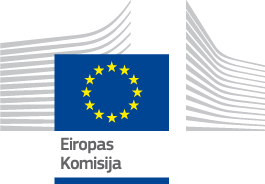

Good Practice Project
A number of factors were involved in this decline, including overfishing, water pollution, habitat destruction and climate change. In particular, there has been a disconnect between those higher up in the catchment area and coastal communities relying on the sea for their livelihoods.
Cuan Beo was established in March 2017 as an association of local shell fish farmers, inshore fishermen, marine heritage and environmental enthusiasts and local community groups with the help of the local FLAG coordinator. Since then, other associate partners support the association’s work including a number of State agencies, Local Authorities and other government organisations.
Cuan Beo set about addressing the South Galway Bay’s water quality issues by building cohesion and understanding, by re-establishing the connection between land and sea communities to ensure that its marine resources are protected and a thriving life quality and economy for communities is created.
Over its two first years of existence, Cuan Beo has been involved in several initiatives highlighting the importance of the local marine resources, including delivering talks on protecting the marine ecosystem; seafood cooking demonstrations and tasting events; and an education day with 500 primary school children. In addition, Cuan Beo has organised native oyster workshops and an oyster restoration project bringing together fishers and the State research agencies to review the decline of the native oyster and identify models of best practice in fishery management and restoration.
Cuan Beo has observed a renewed interest and knowledge about marine pollution and the value of the marine resource from an economic, social and cultural perspective. Converting this interest to an improvement in water quality is however a slow process. Through Cuan Beo’s engagement with the Local Authorities Waters Programme, the organisation was successful in getting two rivers which flow into South Galway Bay prioritised under the Water Framework Directive and classified as “Priority Areas for Action” to improve their water quality.
This example shows the potential for creating an active community network within a catchment area, involving actors with a policy, scientific, and/or industry background, as well as civilians of all ages, to address an important environmental issue. Problems such as water quality degradation in coastal areas that are partially due to activities higher up in the catchment basin are faced by other communities around Europe that could replicate a similar approach to tackling the issue. Cuan Beo is keen to develop links with other similar projects across the EU and beyond.
The success of the Cuan Beo project can very much be attributed to the enthusiasm of the like-minded people that have been willing to volunteer their time and consult widely within the community. A good understanding of funding streams is also important, which can be facilitated by the local FLAG. Cuan Beo enhanced and capitalised on the environmental assets of the fisheries and aquaculture areas, including operations to mitigate climate change.
| Total project cost | €83 344 |
|---|---|
| FLAG grant |
€73 681
|
| Beneficiary contribution |
€9 663 |
| Timeframe of implementation | From Jan 2017 |
|---|---|
| Sea Basins |
|
| Type of area |
|
| Theme |